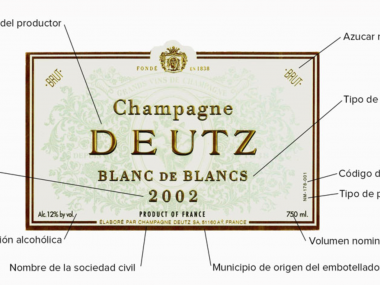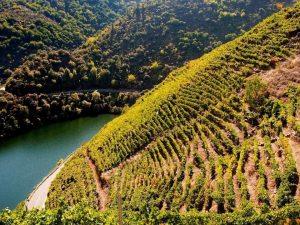do you know the difference between a Manzanilla wine and a Fino wine in Jerez? Although there are more similarities than differences, it is interesting to analyse the elements that define each one, and thus determine the most significant aspects.
Although both wines are characterised by being generous, dry, fresh and with tones that denote elegance, it is important to know the differences and to analyse the reason for their similarities.
what is a fino wine?
It is a white wine that is characterised by being very dry, and that has particular organoleptic elements given by the biological ageing. It is long-lasting, slightly bitter and with very elegant saline nuances.
In Spain, it is produced in some regions of Andalusia and other areas of Seville, but the most traditional places of production are Jerez and Montilla.
It is made with Palomino, Zalema and Pedro Ximenes grapes.
what is a Manzanilla wine?
Manzanilla is a dry white wine, made with Palomino grapes. It is characterised by its accentuated saline touches, due to the fact that the fruit is grown near the Atlantic Ocean.
It is slightly acidic, which provides a pleasant sensation of freshness and a slight bitterness on the palate. It is aged under a layer of yeasts called velo de flor and its fermentation and ageing takes place in cellars in Sanlúcar de Barrameda.
what is the main difference between a Manzanilla and a Fino wine in Jerez?
The main difference is the location of the winery, because if it is a wine that has been aged in Sanlúcar de Barrameda, it will be labelled under the Denomination of Origin Manzanilla Sanlúcar de Barrameda, and if it has been aged in a winery in Jerez, it will be labelled under the DO Jerez.
You are probably asking yourself: why is there such a differentiation?
The location of the wineries has a great influence on the taste of the wine, and in this case, the Manzanilla wines that have been produced just a few metres from the mouth of the Guadalquivir have a very marked influence of the winds that come from the Atlantic.
Unlike those produced in the town of Jerez, where the wineries are about 8 kilometres from the Atlantic and the influence of the sea is less pronounced. Therefore, the ageing is usually different, and so are the results of the wine.
what is velo de flor?
Before we continue, it is important to define what the velo de flor is. It is a layer of yeast cells that forms by natural processes on the surface of the wine when it is in barrels. It is directly linked to the climate, temperature and humidity in the cellars.
It is also responsible for providing saline, nutty and fermenting aromas. However, the most important element is that it prevents the wine from coming into contact with oxygen.
In order for the velo de flor to be produced, one of the most important aspects is the location of the winery and its microclimatic characteristics, which are also responsible for determining the composition and behaviour of the yeast.
Velo de flor in Sanlúcar and Jerez
The microclimate of Sanlúcar means that the veil of flor is thicker and is not lost, thus promoting a more constant and subtle ageing. For this reason, Manzanillas are usually defined as more elegant, of a particular golden colour, smooth and with more accentuated saline touches than those of Jerez.
On the other hand, the fluctuating temperatures in Jerez and the absence of humidity have a different impact on the velo de flor, making it much thinner and even opening the way to the possibility that heat or cold shocks may cause it to be lost in the process.
Therefore, a fino wine will have more marked aromas, with hints of nuts and dried fruits, and on the palate it will be more structured, warmer and with less saline tones.
what is fino or manzanilla en rama?
When we talk about enjoying a fino wine or manzanilla en rama, we are referring to an unclarified wine, which has been bottled with a minimum filtration. In this way, a percentage of sediment or particles of velo de flor are preserved in the bottle, which enhance the particular aromas of the yeasts.
The truth is that the differences between fino wine and manzanilla are very subtle, as in fact they are similar even in the pairing. So the important thing is to enjoy and delight in tasting two of the best white wines in the world.






